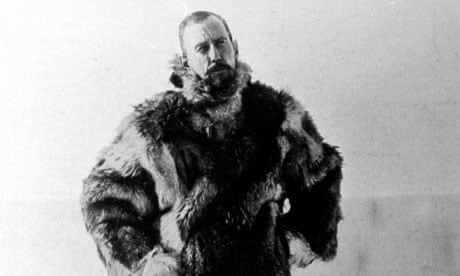General Nobile has been found, but not by Amundsen, who is himself lost.
The big Italian seaplane Latham, stocked with supplies, has been piloted by Major Maddalena to within 150 feet of the ice where Nobile is encamped, and by means of parachutes has dropped the food and clothing, guns and ammunition that may be expected to preserve the marooned men until they can be taken off. Landing by plane on the ice is impossible without disaster, but Nobile being now able to wait, other means will be found.
Captain Amundsen, who is flying in a French seaplane with Major Guilbaud as pilot, left Tromsø on Monday afternoon with the declared intention of flying to North East Land, the western part of the Spitzbergen group. At the time of the last report from King's Bay nothing was known of his whereabouts.
Major Maddalena's success
King's Bay, Spitzbergen, Wednesday 3p.m.
Major Maddalena, the Italian airman, landed at King's Bay, Spitzbergen, a few minutes after two o'clock this afternoon after his flight in search of General Nobile. He had previously wirelessed that he had seen General Nobile's camp from the air, and that, a landing not being possible, he had thrown provisions overboard.
He added that there were no signs of Captain Amundsen, who had flown with Major Guilbaud in a French aeroplane to endeavour to find General Nobile.
On landing at King's Bay Major Maddalena said that he was flying for several hours before he sighted General Nobile and members of his crew. He had immediately descended to within about 150 feet of the surface, but he found it was impossible to land. To have attempted a landing on the rough, broken surface would have meant courting immediate disaster. From his great store-carrying Dornier Wal aeroplane, however, he succeeded in throwing out fur coats, food, drink, guns, ammunition, letters, and instructions.
Major Maddalena says that General Nobile's men shouted excitedly when they caught sight of his aeroplane. He could see them gesticulating and jumping for joy on the ice. He thinks they realised that it was impossible for him to effect a descent, but they were obviously strongly moved when they saw him dropping provisions.
General Nobile has been stranded since May 25, when the Italia was driven down. General Nobile's crew were known to be without guns and ammunition, and were believed to be in peril of Polar bears. They were also suffering intensely from the cold, and some of them were badly frost-bitten. The quantity of stores dropped by Major Maddalena should at least ensure their security for some time to come, and in the meantime Major Maddalena, now that he knows their whereabouts, will be able to keep in touch with them, replenish their stores, and possibly eventually find a landing place from which he can rescue them.
In the meantime the ships at Spitzbergen, the Hobby and Braganza, will endeavour to force their way through.
After having done all he could for General Nobile's crew Major Maddalena tried to find Captain Amundsen. Although he searched a wide area he could find no trace of the explorer.
In King's Bay the tension regarding the fate of General Nobile has been considerably relieved. It is felt that he is in no immediate danger of starvation and that his rescue should only be a matter of time.
On the other hand, the greatest anxiety is experienced regarding the fate of Captain Amundsen and his young French pilot, Major Guilbaud. Amundsen's plane was fitted with wireless apparatus both for receiving and sending messages, and the complete absence of news from him suggests that he has been compelled to make a forced landing on the ice. He had to fly over 1,000 miles to reach the spot indicated by General Nobile, but he had enough oil for a flight of 2,500 miles.
Roald Amundsen's body was never found. Read more stories like this in Those Who Dared: The Guardian Book of Adventure

Comments (…)
Sign in or create your Guardian account to join the discussion